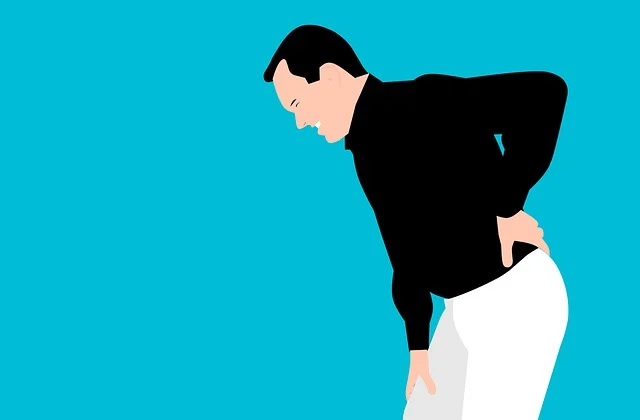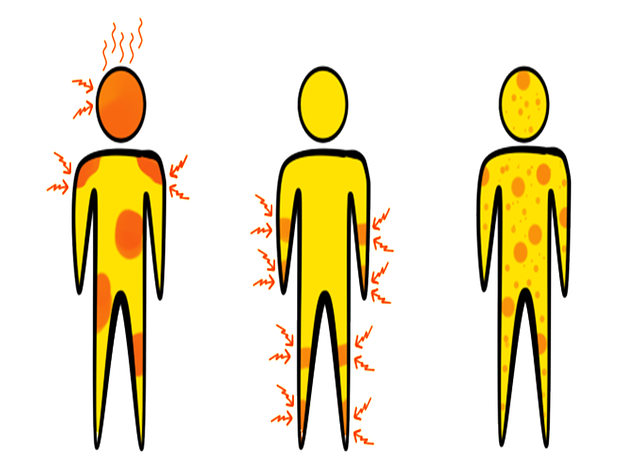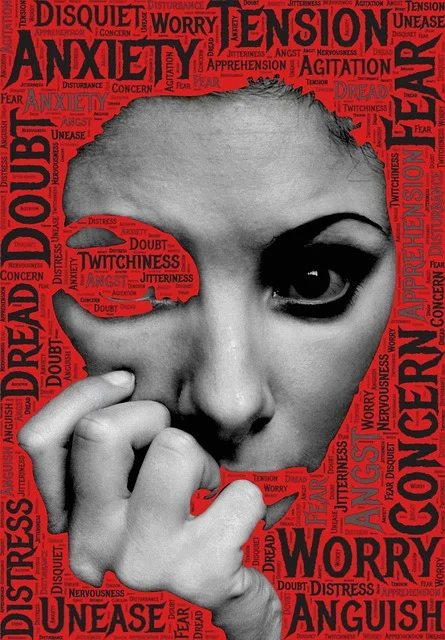An individual with somatic symptom disorder (SSD) experiences intense, heightened anxiety related to bodily symptoms. The individual feels incapable of performing certain everyday tasks because of the extreme thoughts, feelings, and actions associated with the symptoms. They can think that common medical issues are fatal. Even with normal test findings and assurances from the physician, this concern could not go away.
An SSD patient does not pretend to have certain symptoms. The suffering and other issues are genuine. They could be brought on by a health issue. Frequently, no physical reason is identified. The primary issue, nevertheless, is the severe response and actions regarding the symptoms.
What is somatic symptom disorder?
A person with somatic symptom disorder (SSD) experiences extreme suffering related to physical symptoms and responds to them with aberrant thoughts, feelings, and behaviors. Their daily functioning and quality of life are disrupted by the disorder.
Even when a person with somatic symptom disorder reports experiencing symptoms, they could just be typical bodily pains or sensations without a medical cause. The individual’s concern is excessive given the symptom, even in cases where a medical explanation is present.

Individuals with somatic symptom disorder frequently think they have severe physical illnesses and are ignorant of their underlying mental health condition. They frequently visit several healthcare providers due to their distress, which also leads to numerous medical testing and needless procedures.
Signs and symptoms
These are the following signs and symptoms of somatic symptom disorder
Physical symptoms
Physical signs that individuals with SSD may experience include:
- The most often reported symptom is pain.
- Weakness or exhaustion.
- Breathing difficulty (dyspnea).
One or more physical symptoms may be present, and they may range in severity from moderate to severe. They could have an obvious cause or be the result of a medical problem.
Response to physical symptoms
The primary indicators of somatic symptom disorder are the way individuals feel, think, and act in reaction to these physical symptoms. Individuals who have SSD may:\
- Feel a great deal of anxiety around their bodily ailments.
- Worry that minor physical symptoms could be indicators of more serious illnesses.
- Visit their physician for a number of diagnostic examinations and tests, but do not accept the findings.
- Feel that their medical professional is not giving enough attention to their bodily symptoms.
- Move between different healthcare providers or see many at once for treatment.
- Invest an inordinate amount of time and effort in addressing health issues.
- Seem to be disproportionately susceptible to adverse medication reactions.
- Become reliant on other people, requesting assistance and emotional support, and getting upset when they don’t believe their demands are being addressed.
- Have daily functioning issues as a result of ideas, emotions, and actions related to their physical problems.
Between 30 and 60 percent of individuals with somatic symptom disorder also experience anxiety and/or sadness.

Causes
SSD typically starts prior to age thirty. Women experience it more frequently than men do. The reason why some people get this illness is unknown. There could be a few contributing factors:
- a pessimistic perspective
- increased sensitivity to pain and other stimuli on a physical and emotional level
- background or upbringing in the family
- Molecular Biology
A history of sexual or physical abuse may increase a person’s risk of developing this illness. However, not all SSD patients have a history of abuse.
SSD and disease anxiety disorder (hypochondria) are comparable. This is the time when people worry excessively about getting sick or contracting a dangerous illness. They anticipate getting really sick at some point. In contrast to SSD, sickness anxiety disorder is characterized by limited or nonexistent physical symptoms.
DSM-IV criteria
One type of somatoform disorder is somatization disorder. The DSM-IV specifies the subsequent five standards for this disorder’s diagnosis:
- a medical history of somatic complaints before turning 30
- At least four distinct locations on the body hurt Two gastrointestinal issues other than pain, such nausea or diarrhea
- One sign of erectile dysfunction or lack of enthusiasm in sexual activities
- One pseudo neurological symptom, like fainting or blindness, that is comparable to symptoms observed in conversion disease.
It is impossible to link these symptoms to any medical disease. The symptoms may appear intermittently over the duration of the condition; they are not required to all manifest at once. In the event that a medical disease is present, the symptoms must be severe enough to need a different diagnosis. It is not possible to count two symptoms for the same thing. For example, pain experienced during sexual activity cannot be considered as a pain symptom. Lastly, the symptoms cannot be purposefully produced, nor can they be faked in an attempt to attract attention or acquire anything else by appearing ill.
Diagnosis
Working with somatoform disorders in the primary care context presents a difficulty since it requires ruling out medical explanations for physical symptoms while also taking a mental health diagnosis into consideration. When evaluating a patient who presents with unexplained physical symptoms, the diagnosis of a somatoform disease should be taken into consideration at an early stage. No psychiatric medical disorders that are appropriate should be taken into account, but over evaluation and pointless testing should be avoided. The absence of any physical or laboratory findings to explain the patient’s excessive preoccupation with somatic symptoms is often what first prompts the doctor to consider the diagnosis. Specific physical examination findings or laboratory data are not helpful in confirming these disorders.

Treatment
Psychotherapies
Psychotherapy, or any type of therapy in which a person interacts with a therapist to discuss and work on psychological issues, is the main intervention for somatic disorders. When patients with somatic illnesses combine their psychotherapy with medical treatment to address their physical symptoms, the best results are achieved.
Cognitive Behavioral Therapy
For all diseases including somatic symptoms, cognitive behavior therapy (CBT) is the main strategy. The association between illogical thinking and emotional and behavioral suffering is the focus of cognitive behavioral therapy. CBT therapists can assist individuals with somatic problems in recognizing and beginning to modify cognitive distortions, such as the perception that symptoms indicate something much worse than they actually are. A person with somatic symptom disorder, for instance, can dispel worries that they should visit the doctor to have a new symptom examined by reminding themselves that their physician has already ruled out the illness they are worried about.
Therapy Based on Mindfulness
One kind of mindfulness-based cognitive therapy that may be helpful in the management of somatic disorders is acceptance and commitment therapy. Acceptance and commitment therapy, like cognitive behavioral therapy, focuses on faulty thoughts without attempting to change them. ACT methods, on the other hand, teach people how to observe thoughts as they come and go without responding to them. Similar strategies are used in a large number of other mindfulness-based programs.
Techniques for Reducing Stress
Techniques for reducing stress might be particularly crucial for those suffering from somatic diseases. These consist of mindfulness-based stress reduction, CBT techniques, and progressive relaxation. In order to assist people refocus their attention from worrisome thoughts to the bodily sensations that anchor them to the present now, mindfulness practices, which are derived from the practice of meditation, include strategies like breath awareness and posture awareness. Through the promotion of a more sophisticated awareness of body sensations, these techniques can assist individuals with somatic illnesses in viewing bodily events with less fear.

Medications
Medication can be used to treat the specific symptoms of somatic illnesses, but it is not the primary intervention for these conditions. When persons have co-occurring mental health problems including depression and anxiety, they are utilized more frequently.
Antidepressants
Research typically does not support the use of antipsychotic drugs in the treatment of somatic symptom disorder and conversion disorder, although these diseases are occasionally treated with them. When psychosomatic symptoms include severe motor difficulties, they might be helpful in severe cases of conversion disorders.
Depression-fighting drugs
Stuart Kurlansik and Mario Maffei report that antidepressants are an effective treatment for somatic symptom disorder based on a clinical examination of research data. They find that while fluoxetine (Prozac) has a somewhat greater degree of effectiveness, tricyclic antidepressants are more efficacious than selective serotonin reuptake inhibitors (SSRIs). In patients with somatic symptom disorder, both types of antidepressants decreased pain, enhanced overall functioning and sleep, and raised emotions of well-being overall.
Risk factors
Research has discovered a few risk factors connected to somatic symptom disorder. Among these risk factors is a past record of:
- Increased awareness of physical experiences.
- Substance abuse illness.
- Alcohol use disorder.
- Maltreatment in early life.
- Abuse, both sexual and physical.
- Trauma and a chaotic lifestyle.
- Childhood chronic disease.
- Existence of other mental health issues, particularly despair or anxiety.
Personality disorders such as obsessive-compulsive disorder, paranoid personality disorder, and avoidant personality disorder are present.

Individuals who are prone to SSD may benefit from therapy to develop other coping mechanisms for stress and triggers. This could lessen how severe their symptoms are.



